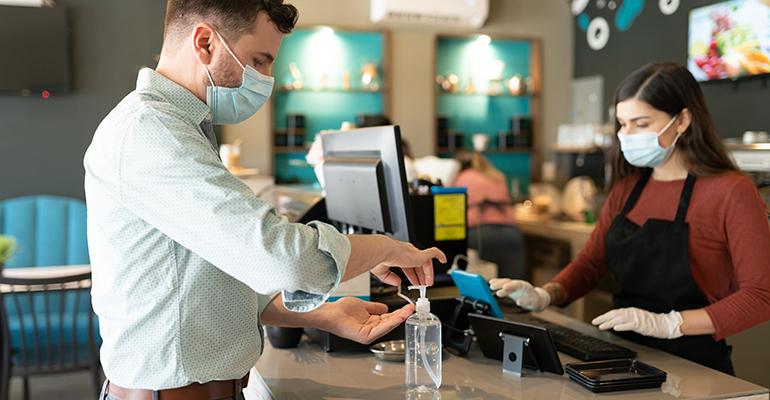Despite the ongoing pandemic, consumers are warming more to the notion of dining out — something they yearn to do more — but more than two-thirds say they still prefer cooking and eating at home out of concern about exposure to coronavirus, according to new research by global consulting firm AlixPartners.
Adam Werner, AlixPartners managing partner, said during a Restaurants Rise webinar on Thursday that the firm has been surveying consumers across the U.S. through the ongoing pandemic and results indicate the relationship between diners and restaurants is evolving.
Looking at data from July compared with surveys in April, Werner said, “Consumers are gaining more confidence. But as they gain more confidence, their expectations are actually rising.”
While restaurant spending is still fairly low, it’s still No. 1 when you ask consumers how they’d like to spend their dining dollars, he said.
“Consumers are looking to dine out. It’s not all doom and gloom. They want to go. They need to leave the house, but they want to feel safe,” he said.
Between April and July, the percentage of consumers that said they prefer cooking at home remained the same: 61%. But their reasons for staying home changed somewhat.
In July, for example, 45% of consumers said takeout/delivery was too expensive, up from 39% who said the same in April.
But consumers appear less concerned about limiting contact with people. In April, 49% said they stayed home to limit contact with people, and that dropped to 44% in July.
More than half of consumers surveyed (51%) had returned to dining out, though 6% said restaurants in their area were not yet open. Of the 43% that had returned to restaurants, 16% had only dined outdoors, and only 29% said they would dine out again within the next two weeks.
Consumer sentiment about delivery and takeout is also evolving, Werner said, with about 57% of consumers now ordering delivery or takeout at least once a week.
Though use of delivery is increasing, consumers still prefer to pick up their own food — in part because they want to avoid the added expense of delivery, but also because of concerns about health and safety. And 47% of consumers said they just wanted to get out of the house.
Werner urged operators not to overlook the consumer experience of picking up takeout, saying restaurants should make it as easy as possible. “The consumer experience is suffering and those that get it right will win,” he said.
Restaurant operators should also consider that not all delivery/takeout customers are the same, and they should tailor their offerings for high-frequency users who order more than once a week — who tend to be male and younger, but cross all income levels.
What has to change for consumers to feel more comfortable about dining out?
Consumers want to see safety cues. Werner said consumers look for opportunities to dine outdoors. They like to see mask mandates and disposable menus, for example.
Consumers are also looking for discounts as incentives to dine out, but that is not as important to them as health-and-safety, he said.
Some highlights of Werner’s recommendations:
- Continue to evaluate your off-premise tactics. Things that didn’t work in April might be more viable now. “And don’t forget about pickup,” he said.
- Prepare for the unexpected. Operators are expecting capacity limits to increase, but it may not happen in a steady line. “It might be zero, then 25%, then back to zero again,” he said.
- Broadcast your health-and-safety standards very loudly. Make sure guests see that the front of the house is operative very differently to protect both guests and workers through the crisis.
- Look for ways to cut costs. Don’t skimp on health and safety, Werner said, but restaurants can make their menus more efficient and work with suppliers to find cost reductions. “Looking under every rock for improvements tied to other costs across your P&L is definitely important, but I would say start with your supply chain and go from there,” he said.
“Now is the time to think about longer-term sustainable cost reduction programs to weather the storm,” he added. “It’s amazing how fast entrepreneurs in this space can figure out a solution. If you haven’t by now, what are you waiting for?”
This is part of special coverage of the Restaurants Rise digital summit taking place Aug. 11-13 and Aug. 18-20, powered by Nation’s Restaurant News and Restaurant Hospitality. Register for live sessions or on-demand replays at RestaurantsRise.com.
Title sponsors for Restaurants Rise include Campbell’s Foodservice, GrubHub, Idaho Potato, ShiftPixy, Wisely and Impossible.
Contact Lisa Jennings at [email protected]
Follow her on Twitter: @livetodineout





